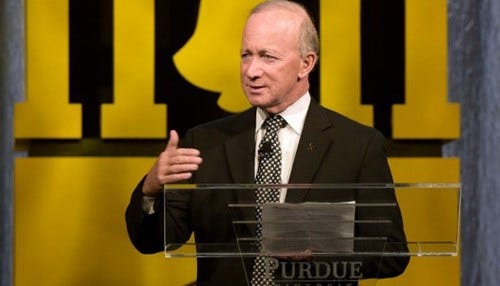Purdue Keeps Freeze on Tuition
 Purdue President Mitch Daniels will give the keynote address at the event.
Purdue President Mitch Daniels will give the keynote address at the event.
Subscriber Benefit
As a subscriber you can listen to articles at work, in the car, or while you work out. Subscribe NowTuition rates at Purdue University will remain flat for another year. President Mitch Daniels has announced the university’s tuition freeze will continue through the 2017-2018 academic year, marking the fifth consecutive year without a tuition rate increase.
The university says tuition and fees will remain virtually the same as they were in the 2012-2013 academic year. In-state students will pay $10,002 while out-of-state students will pay $28,804. International students will pay $30,804.
"One of our most important goals continues to be affordability," said Daniels. "The total cost of attendance at Purdue University is going down thanks to the efforts of all members of the Purdue family — faculty, staff and alumni — who are committed to keeping a world-class education within the reach of all students. While we cannot commit to zero increases indefinitely, our policy will always be to protect students’ family budgets, continue investing in our employees and our vital mission of delivering higher education at the highest proven value."
The university says students now are paying less for the overall cost of college than students did in 2012-2013. This is due not only to the tuition freeze, says Purdue, but also because of flat or lower room and board costs and the potential lower cost of books because of Purdue’s contract with Amazon.
Daniels announced the tuition freeze extension Wednesday at a Purdue Student Government meeting. Most of the students who attended the meeting have never seen a tuition increase during their time at Purdue.
"The tuition freeze is having a massive, positive impact on the lives of Purdue students, and we’re very grateful for the work that has gone in to extending the freeze for another year," said Mike Young, Purdue Student Government president.
Daniels said the tuition freeze is just one part of a much larger picture of "increasing affordability, reducing debt and being strategic about where we put our resources."
